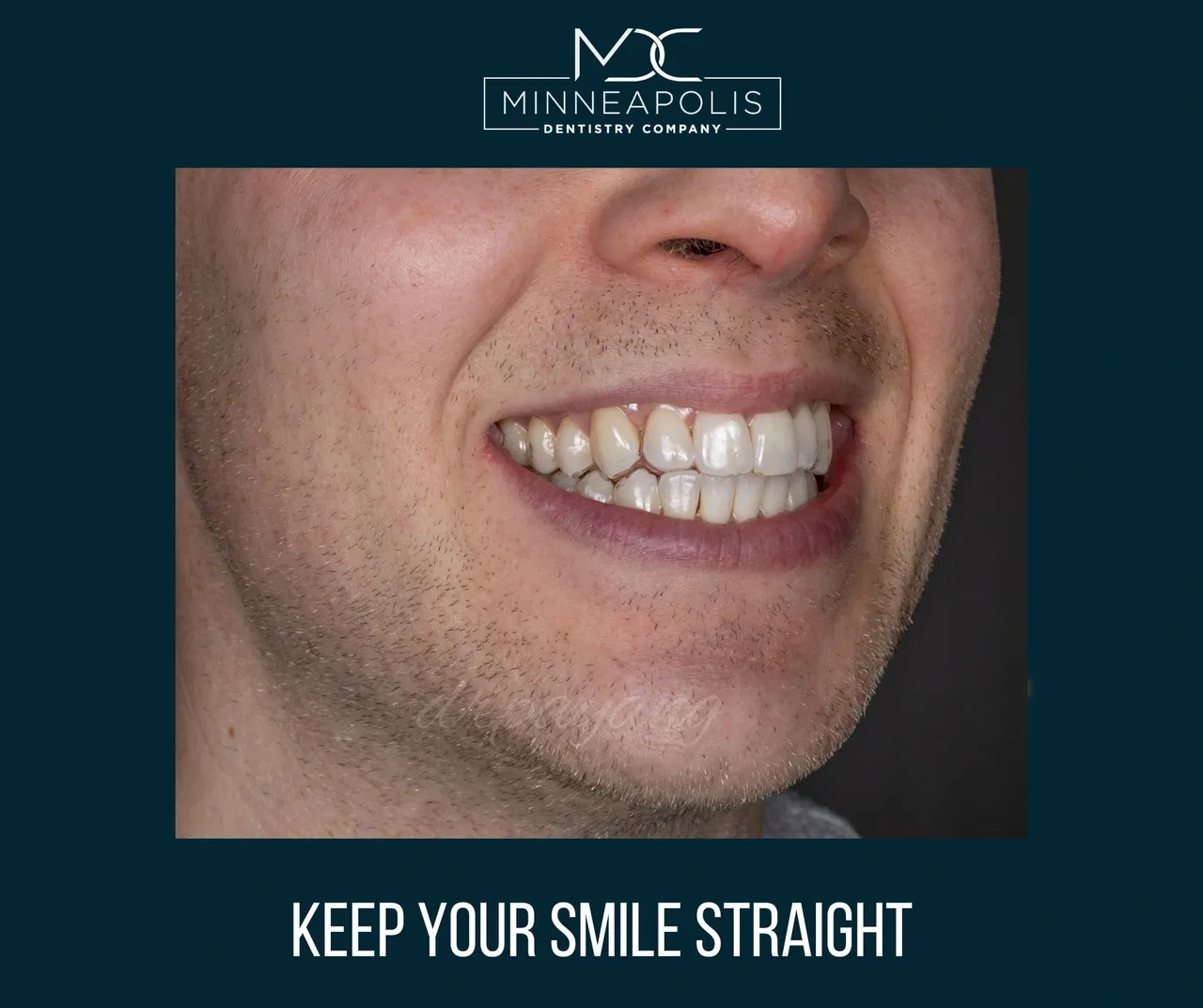Braces & Bites

YujXeeb is a high school student and is soon going to college. The gap, or diastema, between his two front teeth bothered him, and he wished to close it.
Initially, we could have used clear aligners (Invisalign) alone to correct the gap, but we also had to consider the reasons for the gap. His inner lip vestibule is connected to his gum tissue by a very strong piece of tissue, a frenum. Whenever he uses his mouth to smile or speak, that piece of tissue would pull upwards, which could cause the teeth to separate.Therefore, merely moving the teeth toward one another with clear aligners will not be as effective as physically moving them together. Furthermore, we must address the frenum. Orthodontic treatment alone is not sufficient to close gaps that may reopen. For this reason, we used traditional fixed brackets to close the gap and lasers to release the frenum, preventing muscle pulling of teeth.
Traditional braces are a time-tested method for correcting misaligned teeth and achieving a healthy, functional bite. They work by applying gentle, constant pressure to the teeth, gradually shifting them into their ideal positions. As the teeth move, the braces also help to balance the biting contacts and forces in the mouth, which can improve overall oral health and prevent future dental problems. Dr. Yang utilizes both traditional braces and clear aligners to customize smiles to fix bites, align teeth to distribute the chewing forces to their ideal positions. This blog will focus on traditional braces, and we will write more in a different post on clear aligner orthodontics.
Here’s how traditional braces work to balance biting contacts and forces:
1. Addressing crowding and spacing issues: One of the main causes of unbalanced biting contacts and forces is overcrowding or spacing issues in the mouth. When teeth are too crowded or spaced too far apart, they can affect the way the upper and lower teeth come together when biting and chewing. This can lead to uneven wear and tear on the teeth, as well as jaw pain and other discomfort. Traditional braces gradually shift the teeth into their proper positions, correcting these issues and improving the overall balance of the bite.
2. Aligning the bite: In addition to addressing crowding and spacing issues, traditional braces can also help to align the bite. This means ensuring that the upper and lower teeth come together properly when biting and chewing, without any gaps or overlaps. When the bite is properly aligned, the force of biting and chewing is distributed evenly across all of the teeth, reducing the risk of wear and tear and other dental problems. Dr. Yang utilizes technology that helps pinpoint the exact location of teeth contacts with BioResearch TekScan. By evaluating the initial bite, we can determine how much force a person is putting on each side of their mouth.
3. Adjusting the force of the bite: For example, if one side of the mouth is experiencing more force than the other, braces can be used to shift the teeth and balance the bite. This can be confirmed with the TekScan data, which Dr. Yang will use to balance the bite. This can help to reduce the risk of tooth decay, gum disease, and other dental problems that can occur when the force of the bite is unevenly distributed.
This patient illustrates that, although braces can effectively move teeth, we must also take into account the entire face. Due to his strong frenum, he may eventually experience orthodontic relapse. The term “relapse” refers to the process of teeth shifting back to where they began. As a doctor who focuses on the muscles and physiology of the mouth, Dr. Yang is aware that the frenum needs to be released. In orthodontics, when a patient with space in their smile completes their treatment, the orthodontist may place a small metal bar on the back of the teeth in order to hold the teeth in place. In most cases, this method works well to hold the teeth in place but it often breaks because the muscles of the lips are so strong that eventually the glue holding the retainer bar is insufficient to withstand the forces of nature and the bar breaks off.This indicates that the bite is not stable. If the bite forces are not accounted for, relapse may also occur, which can result in teeth shifting back or worse. To prevent this from occurring, we released the frenum during orthodontic treatment, and we monitored the bite using the BioResearch TekScan.
Overall, traditional braces and a thorough bite analysis are highly effective tools for balancing biting forces and contacts in the mouth, thereby promoting optimal oral health and preventing dental problems in the future. In addition, you must always ask yourself, why are the teeth in the position they are in, and how can we maintain the straightened position in the long term? Taking the time to treat you comprehensively is what we do so that we can provide you with dentistry that will last. In order to determine the best treatment plan for you, we assess your teeth, your jaw, bite, muscles, and habits.
If you’re considering braces to correct your misaligned teeth, or if your teeth have shifted post-braces, schedule an appointment with Dr. Yang to learn more about the benefits of traditional braces and whether they’re the right choice for you.
